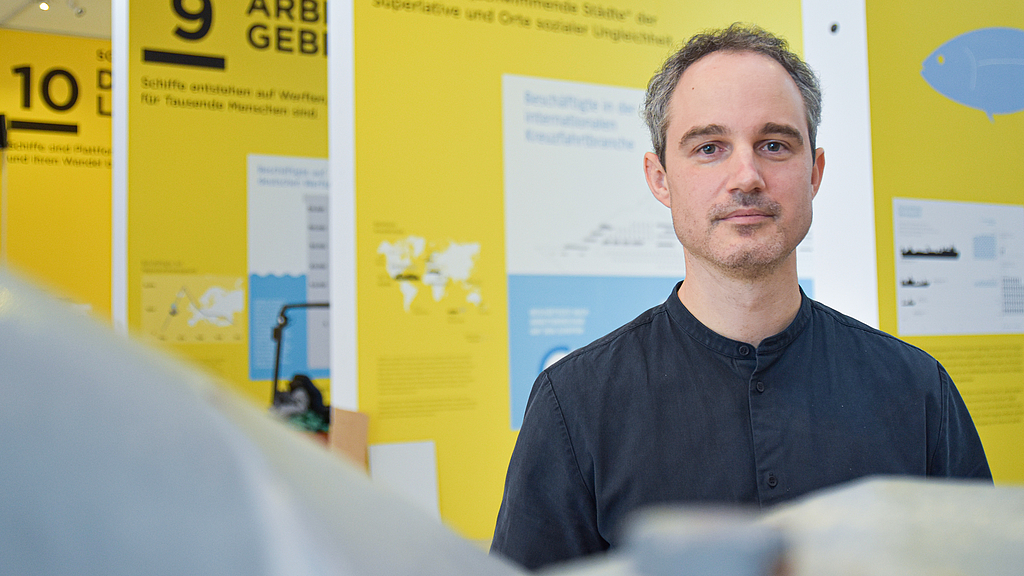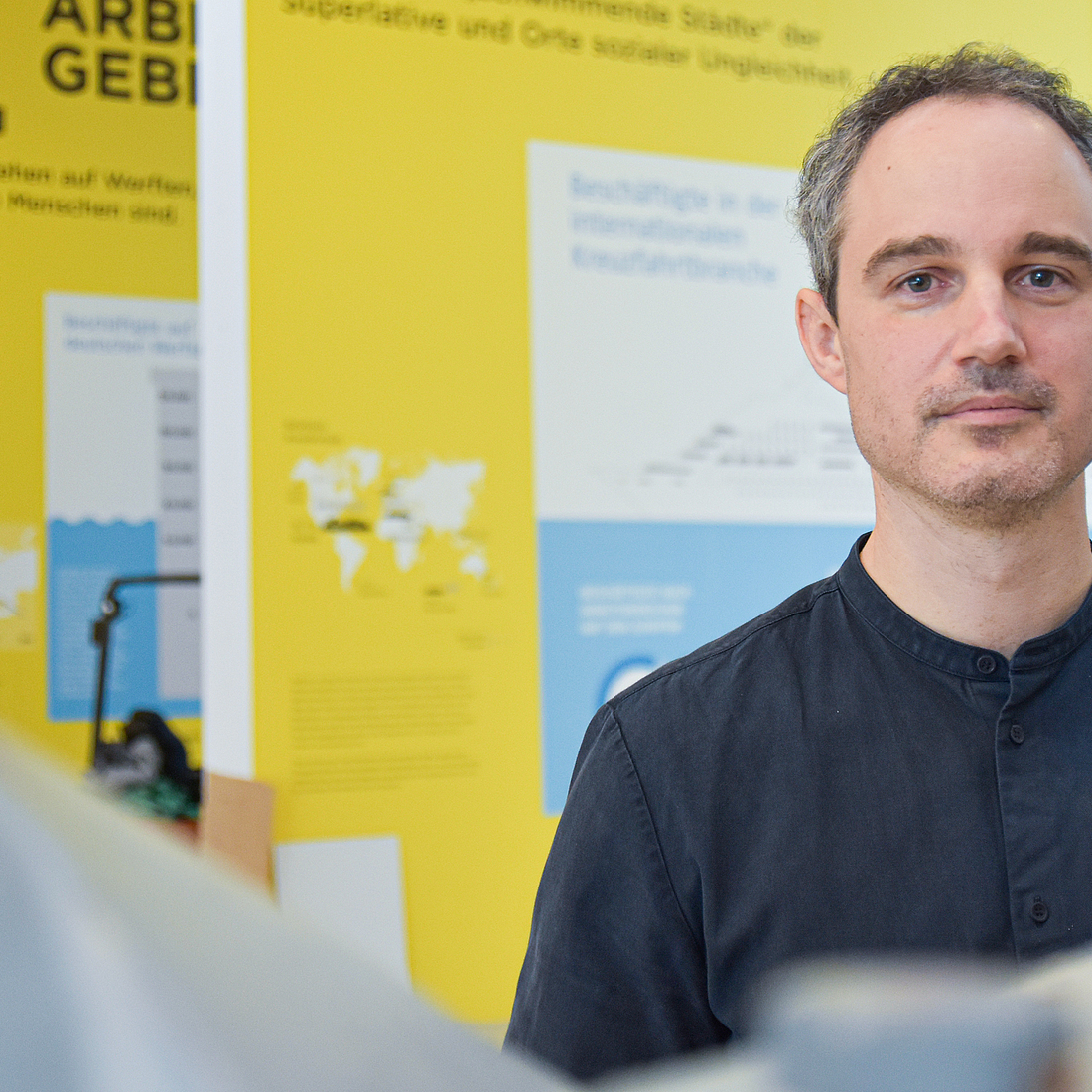Scenography: The art of exhibiting
Christoph Geiger builds stories. Walk-in stories. As a scenographer at the German Maritime Museum (DSM) / Leibniz Institute for Maritime History, the graduate of the University of the Arts Bremen (HfK) works with the curators, the workshop and external partners to bring the themes of the exhibitions into space. For CHANGE NOW! he staged the cosmos of shipping in the 2800 square meter extension.
A big ahoy welcomes visitors at the entrance to the extension. The well-known sailor's greeting, emblazoned in huge letters on the wall, does not fail to have an effect: the view of hundreds of ships ranging in size from mini to meter-high catapults visitors directly into the world of the port. Willi Kuhweide's sailing boat, with which he won Olympic gold, is positioned at a striking angle in the room and, together with the racing foursome, fires up the sporting spirit.
In the abstract harbor, looking at the ships makes it clear: shipping is multifaceted. It belongs to sports, can be a hobby or pushes itself as a gigantic colossus from shipyards through narrow waterways. "Shipping is a subject of superlatives, which is why we play with dimensions," says Christoph Geiger, scenographer at the DSM. It's a not-so-common profession in which exhibition design and structural implementation converge. Content, exhibits, lighting, graphics, media and sound have to create a narrative, and in the best case scenario, become a physical experience with memory value.
The job of the 37-year-old, who has been at the DSM since 2019 and was already responsible for KOGGE TRIFFT PLAYMOBIL, SEA CHANGES and KARTEN WISSEN MEER and steered the development of the FRAME light installation at the extension building, is to reinforce the museum's messages through the staging in the space. "Scenography, together with curation, is responsible for the difference between staging and exhibiting," the Heidelberg native sums it up. Typically, the planning starts with rough models and sketches on the PC, which Geiger develops with the design team and the curator(s). After eleven months of ping-pong with everyone involved, the DSM workshop team brought the final designs to the extension building within three months.
On 2800 square meters, the designer and the exhibition team rolled out the shipping to all facets. The architecture seemed made for the oversized theme. Geiger took full advantage of the perspectives and tickled guests' emotions. "We take people on a journey and want to make them marvel, surprise them and here and there also make them think." After all, CHANGE NOW doesn't just show the sunny side of shipping. As the title suggests, it also looks into the exhausted seas. The scenographic response to this are graphics in alarming red and orange and tetrapods that, like stumbling blocks, force us to pause.
A pragmatist and minimalist, Geiger attempts to recycle elements from previous exhibitions. With a fresh coat of paint, they fit into the show in a new function. Even the more than five-foot-tall letters of the Science lettering, which rise into the air much like Hollywood letters, were built in-house. "We are fortunate to have our own workshop with different trades. She knows the stock very well, and we do a lot of the work ourselves."
The scenographer used the load-bearing ten walls in the middle section of the building for messages: Ten theses, which look like an oversized open book, illustrate the diverse roles of the ships. Geiger is pleased that narrative and space come together particularly well at this point. "What has emerged are walk-in stores of knowledge in which selected projects show the breadth of the house."
After working in agencies in Stuttgart, Frankfurt and Berlin, the graduate of the University of the Arts Bremen (HfK) repeatedly collaborates with the HfK for his creative work at the DSM: "Maybe it's because my interdisciplinary way of working has its roots in the HfK and we therefore think on the same wavelength, but the dialogue with the university gives goosebumps. It's a kick of ideas every time."
Geiger is currently busy with the new exhibition DATEN LAUSCHEN, which will be on view in the 60-meter gallery in the extension building starting June 3. It is an artistic continuation of the theme of research shipping. For it, artist Hannes Rickli translates scientific data into a media installation.

Christoph Geiger is scenographer at the German Maritime Museum.
Photo: DSM / Annica Müllenberg

